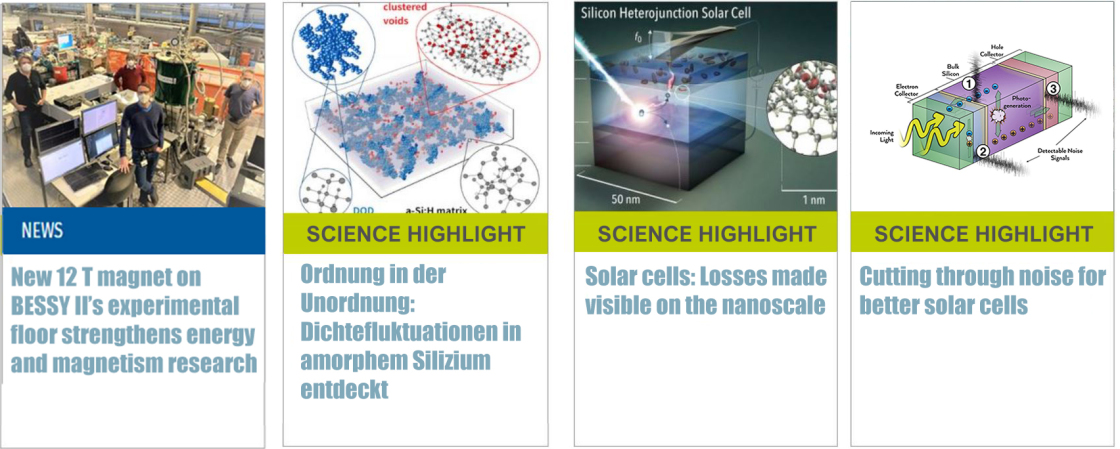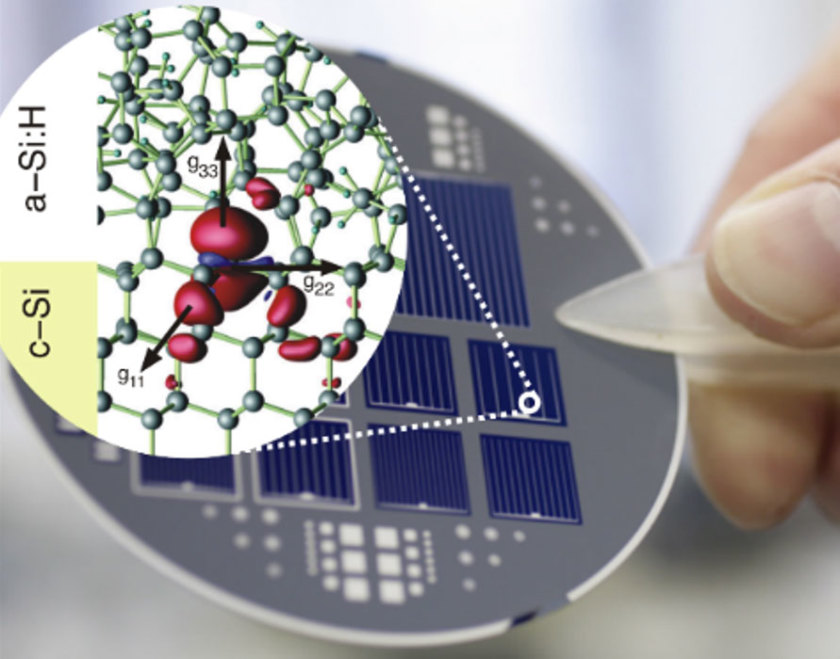Department Spins in Energy Conversion and Quantum Information Science
Department
Workinggroups Stafflist Publications Cooperations
Current News from the Department SE-ASPIN
About the Department
The department Spins in Energy Conversionand Quantum Information Science (ASPIN) is dedicated to the investigation of structure-property relationships, in particular of systems featuring electron spins. Our spin-oriented perspective extends to materials and devices used in applications such as photovoltaics (PV), artificial photosynthesis/solar fuels, batteries, and quantum computing. The overarching goal of our research is to identify and eliminate device efficiency limiting processes that are connected to defects in the materials or to insufficient light harvesting. In the case of quantum computing, we are studying quantum many body interactions and complex quantum states. For all of the above research we are using electron and nuclear spin as nanoscopic observers. Their magnetic fingerprints are detected through electron paramagnetic resonance (ESR, EPR) and nuclear magnetic resonance (NMR) methods. EPR can identify and quantify radicals in physical, chemical and biological substances via their spin magnetism; NMR is the counterpart with regards to nuclear spin magnetism.

Conventional EPR spectrometer from Bruker (left) with its 1.5-ton electromagnet, as it has been used in spin radical research to date, and the prototype of a portable EPR-on-a-Chip spectrometer (center left). The EPR chip, which is only 1 mm2 in size, contains the spin sensor with a diameter of 300 µm (center right). This is mounted in the permanent magnet by means of a printed circuit board. The size of the prototype is only determined by the permanent magnet. On the right the chip is shown in the size ratio to a 2-cent coin.
The department operates a world-wide unique EPR and NMR laboratory, together with partners from Freie Universät Berlin (FUB) and Max-Planck-Gesellschaft (MPG), and develops new methodologies such as electrically- and optically-detected magnetic resonance, as well as synchrotron-based THz-EPR spectroscopy. Since conventional EPR spectrometers work with a fixed excitation frequency, they require an electromagnet that often prevents operando and mobile use. To overcome these limitations, the department develops EPR-on-a-Chip (EPRoC), which is a battery driven EPR spectrometer integrated on a square millimeter-sized silicon chip (see Figure above) and enables the use of a permanent magnet. With EPRoC, an EPR spectrometer can be easily integrated into the sample environment, leading to a revolution in operando EPR spectroscopy.
The department has three working groups:
- Quantum Information with Solid State Spins - QuISS (Group leader: B. Naydenov)
- Spins in Energy Materials - SPEM (Interims Group leader: B. Naydenov)
- Spectral Conversion Systems - SPECS (Group leader: R. MacQueen)
Funded network project EPRoC
Electron paramagnetic resonance spectroscopy (EPR) provides information about chemical and physical properties by using the tiny elementary magnets (spins) of unpaired electrons, such as those present in free radicals or defects in semiconductors, as a highly specific nanoscopic probe. This enables physical, chemical and biological substances to be quantified and identified very quickly and efficiently with regard to their radical concentration and their origin. Unfortunately, the EPR spectrometers currently available on the market are bulky and costly to manufacture due to the measuring principle used, so that they are only suitable for mobile use to a very limited extent.
The HZB and the University of Stuttgart are currently developing a new concept that allows the entire spectrometer to be integrated on a battery-powered silicon chip of only a few square millimetres (EPR-on-a-Chip, EPRoC). EPRoC can be placed directly into the sample or sample environment (human body, water, engines, reactors, atmosphere, etc.) to collect operando or in vivo data on site. This opens up radically new application possibilities in medicine, environmental diagnostics, food chemistry, process control as well as in materials and fundamental research. The national and international property rights necessary for this technology have been applied for through the HZB and some have already been granted. The potential of the EPRoC technology is currently being investigated within the framework of the BMBF funded network project EPRoC together with Bruker BioSpin GmbH, KIT, University of Stuttgart and Max-Planck-Insitute for Chemical Energy Conversion (MPI CEC).



